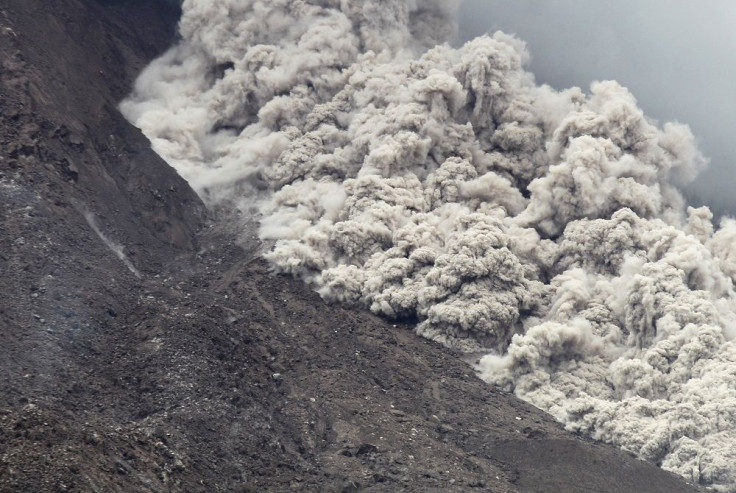Indonesia’s Mt Sinabung Erupts Again, 10,000 Residents Flee; Volcanoes in Philippines & Japan Also Erupt [VIDEO]

Violent eruptions shook Sumatra in Indonesia after Mt Sinabung erupted several times on Tuesday. The volcanic activity sent rocks and hot ash flying in the air, prompting about 10,000 residents in the province to flee their homes.
Prior to the eruption, authorities have elevated the alert status of the active volcano to the highest level in early June, reports Stuff.co.nz. When the 2,460-metre-high Mt Sinabung erupted in February 2014, it killed 16 people. The volcano was dormant for 400 years until it came back to life in 2010, reports BBC.
The volcano is one of 129 active volcanoes in the Southeast Asian nation that sits on the Pacific Ring of Fire, where the Philippines is also located. On Monday, Mount Bulusan in its Bicol Region likewise erupted as well as Asama in Japan on Tuesday.
According to SFGate, the Tuesday eruption unleashed 48 avalanches streaming down the Indonesian volcano’s slopes. The largest avalanche reached 2.5 kilometres southeastward. Sinabung shot smoke and ash at least 700 metres into the air, resulting in faces of people fleeing the danger zone to be caked in ash.
However, the 10,000 who fled for their safety is only a third of the estimated 33,000 residents who live in the 7-kilometre radius main danger zone, said Subur Tambun, head of the local disaster mitigation agency. “The villagers insisted on tending crops. They are confident of being able to escape a major eruption. All we can do is ask them to leave,” SFGate quotes Tambun.
The slopes of Mt Sinabung, known for its fertile land that is good for growing chilies, oranges, cocoa and coffee, is home to more than 150,000 Indonesians, many of whom are reluctant to leave their homes. Some of those who insisted on remaining, despite the danger to their lives, said they want to guard their homes and clean up the ashfall on their farms.
In the Philippines, Bulusan had a minor steam-driven explosion on Monday that lasted 10 minutes and sent a 1-kilometre ash plume into the sky. In Japan, Asama also had a small explosion on Tuesday, although the eruption spread ash only on areas near the volcano. The first eruption of Asama since 2009 prompted the Japan Meteorological Agency to set a 2-kilometre exclusion zone, reports Wired.com.
To contact the writer, email: vittoriohernandez@yahoo.com




















